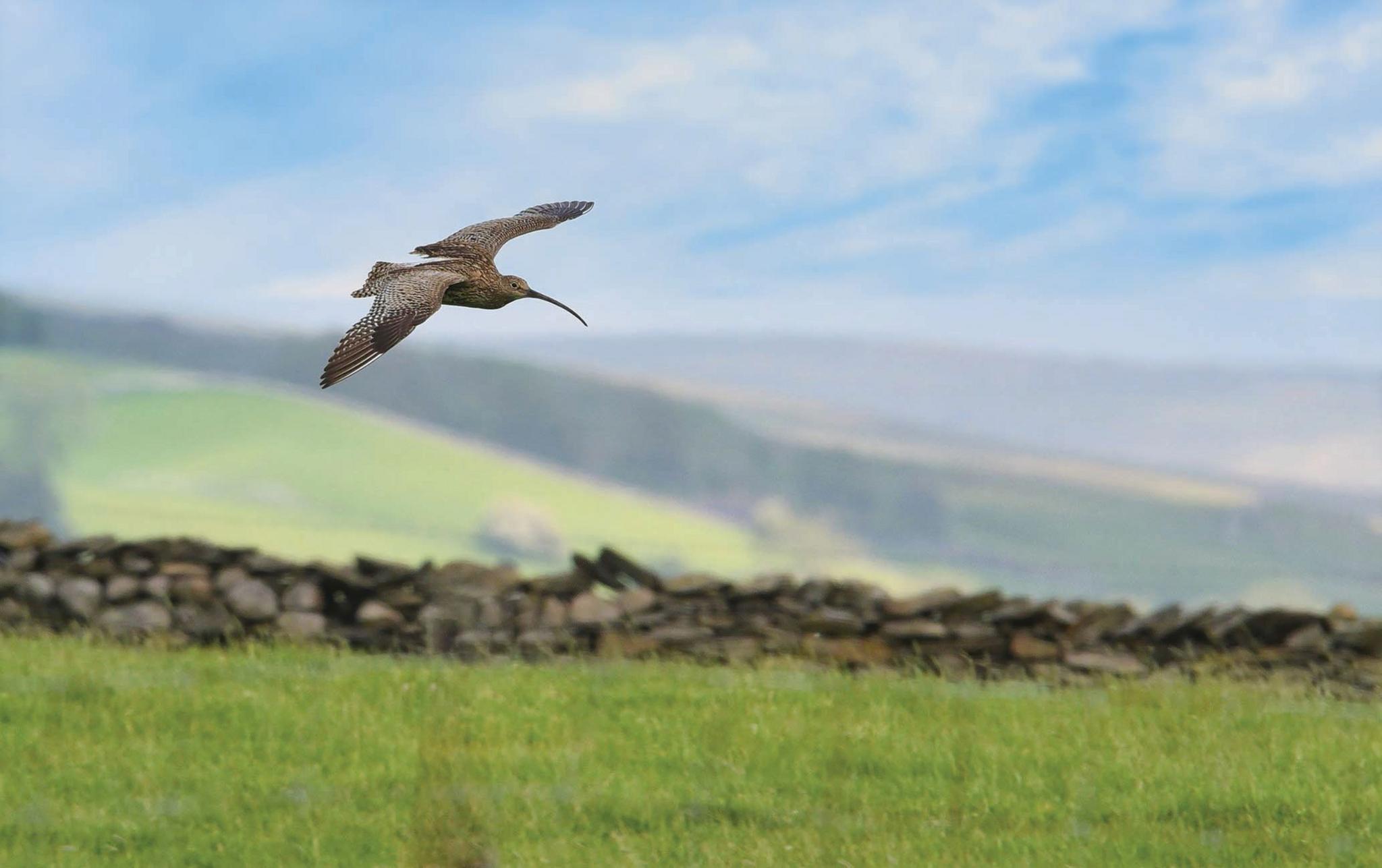Floodplain project celebrates 20-year milestone

Several organisations have worked together on the project over two decades
- Published
Groups involved in a pioneering project to transform a floodplain into a thriving wetland habitat are celebrating the 20th anniversary of the start of their work.
Long Preston Floodplain in is a unique wetland area around parts of the River Ribble between the Yorkshire Dales and Forest of Bowland.
Since 2004, several organisations have worked with farmers in the area on the project, which is ongoing.
David Renwick, regional director for the North at Natural England, said the Long Preston Floodplain Project was "a fantastic example of what can be achieved by building partnerships for nature’s recovery".

The flood plain can be home to up to 2,500 birds
"Alongside the amazing biodiversity that thrives on the site, the Long Preston Floodplain is working to protect homes from flooding and support water resources," he added.
Natural England, the Yorkshire Dales Millennium Trust, the Ribble Rivers Trust, the RSPB and North Yorkshire Council have all worked together on the scheme over the past two decades.
In total, 207 acres (84 hectares) of wet grassland have been created and 190 hectares (470 acres) of farmed land has been restored to a wetland habitat - including flood embankment realignment and the creation of ponds.

Curlews are among the 47 species of under-threat birds recorded at the site
The wetland is an important habitat for several species of breeding, wintering and migrant birds which are on the UK Birds of Conservation Concern Red List, external.
A total of 47 species on the list of under-threat birds have been recorded at the site including, curlews, lapwings, grey partridges, bewick’s swans, pochards and hen harriers, as well as skylarks, greenfinches, tree sparrows and house sparrows.
At the peak of the season, the area can be home to up to 2,500 birds and more than 18 years of bird counts have been undertaken, with over 200 species recorded, according to those behind the project.
Meanwhile, 16 habitat creation schemes have been completed, covering 26 acres (10.5 hectares) of land on the floodplain.
The aqueduct on Wiggleworth Beck has also been restored, as well as the creation of a pond alongside the Ribble Way and the re-instatement of an historical pond site.
Jack Spees, chief executive of the Ribble Rivers Trust, said: "At the centre of the project’s successes are people: those who are deeply committed to all aspects of the area, farming, wildlife and water.
"We have worked together building trust and friendships - both of which are lasting. I can’t wait to see what the next 20 years holds."